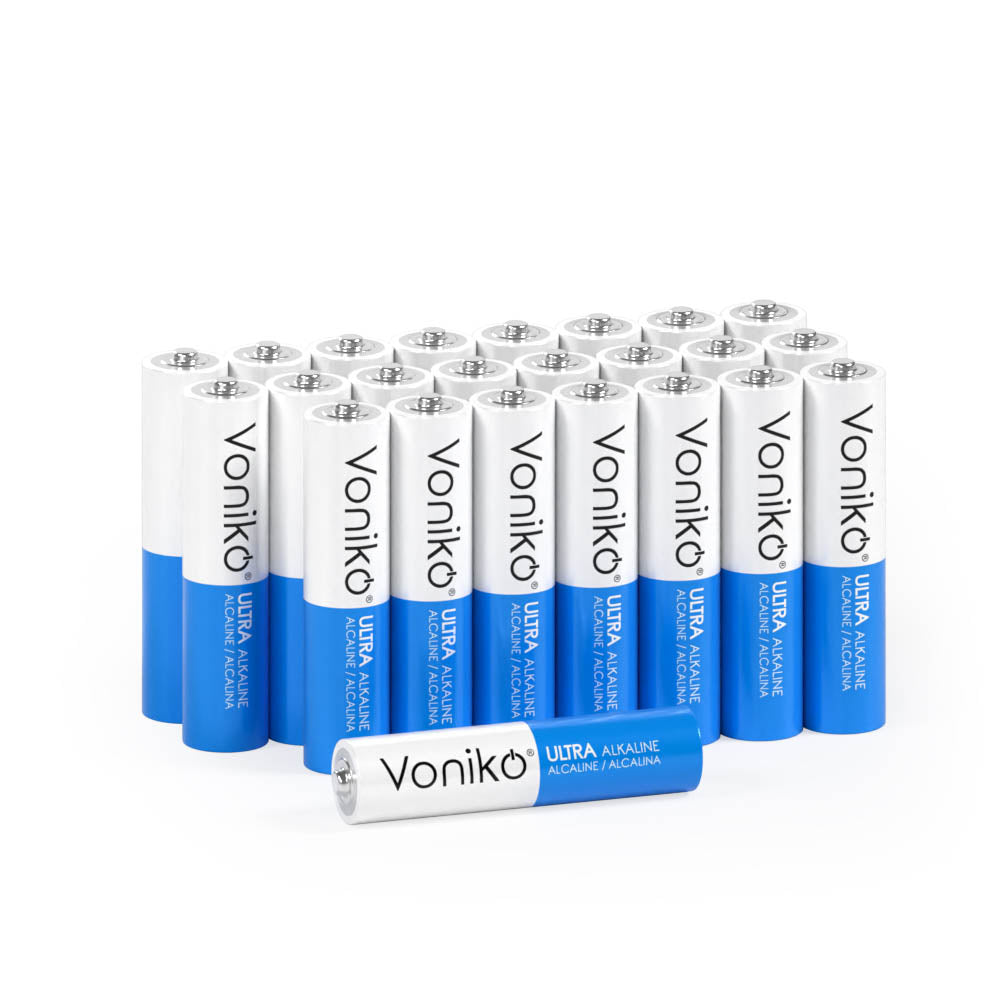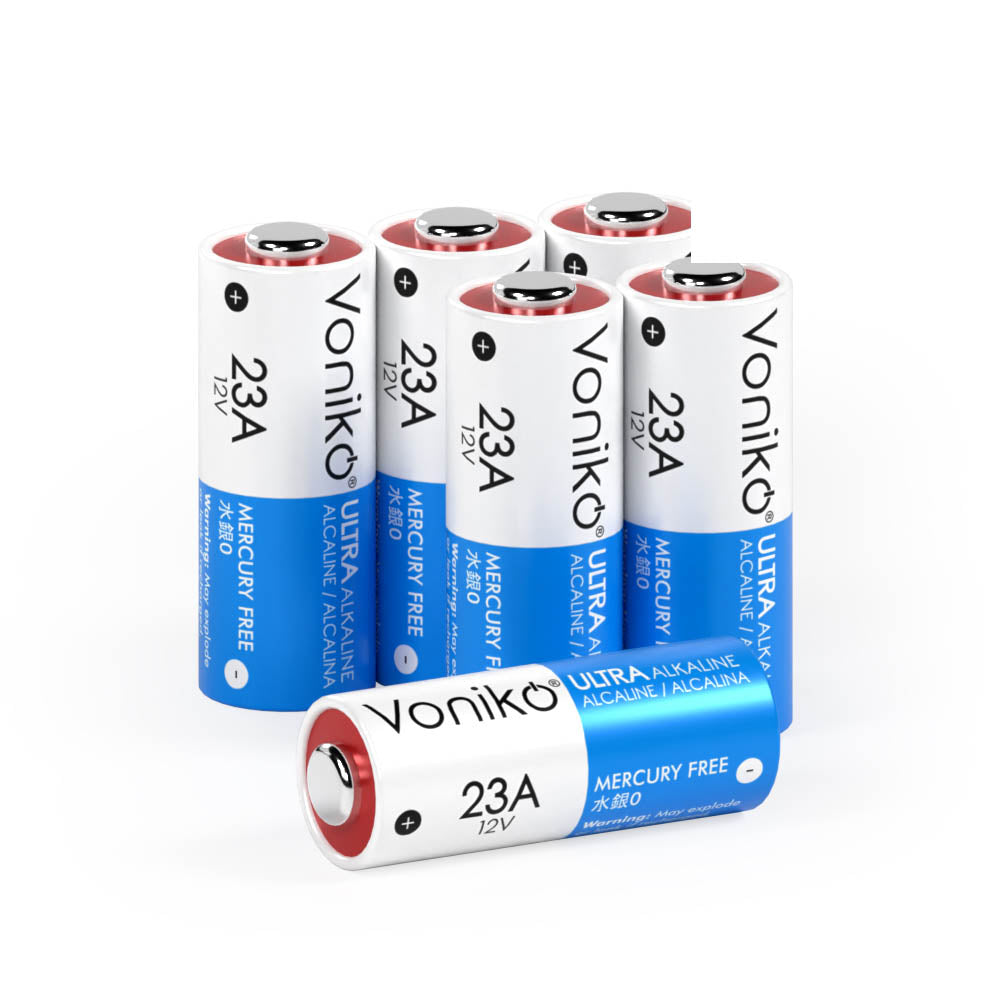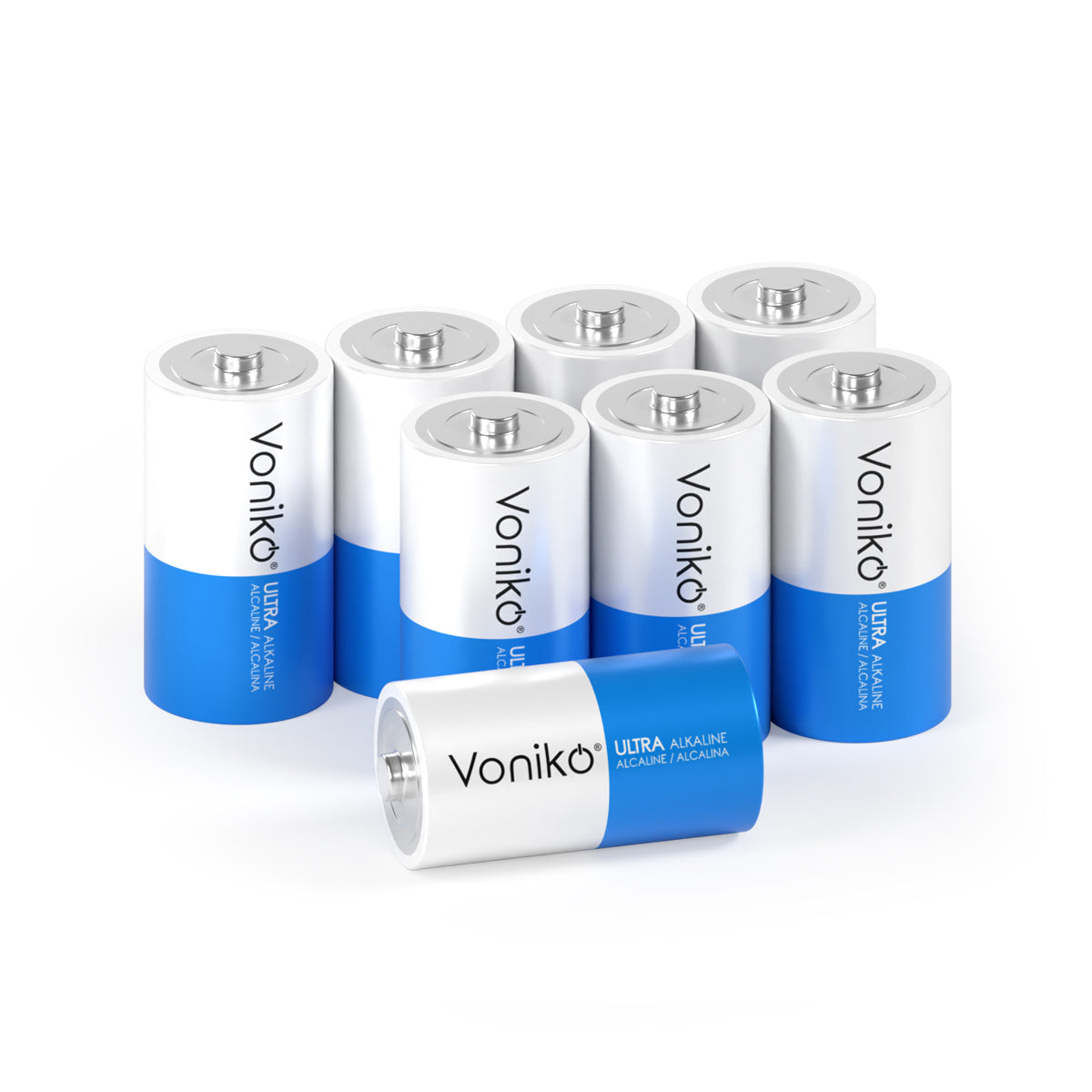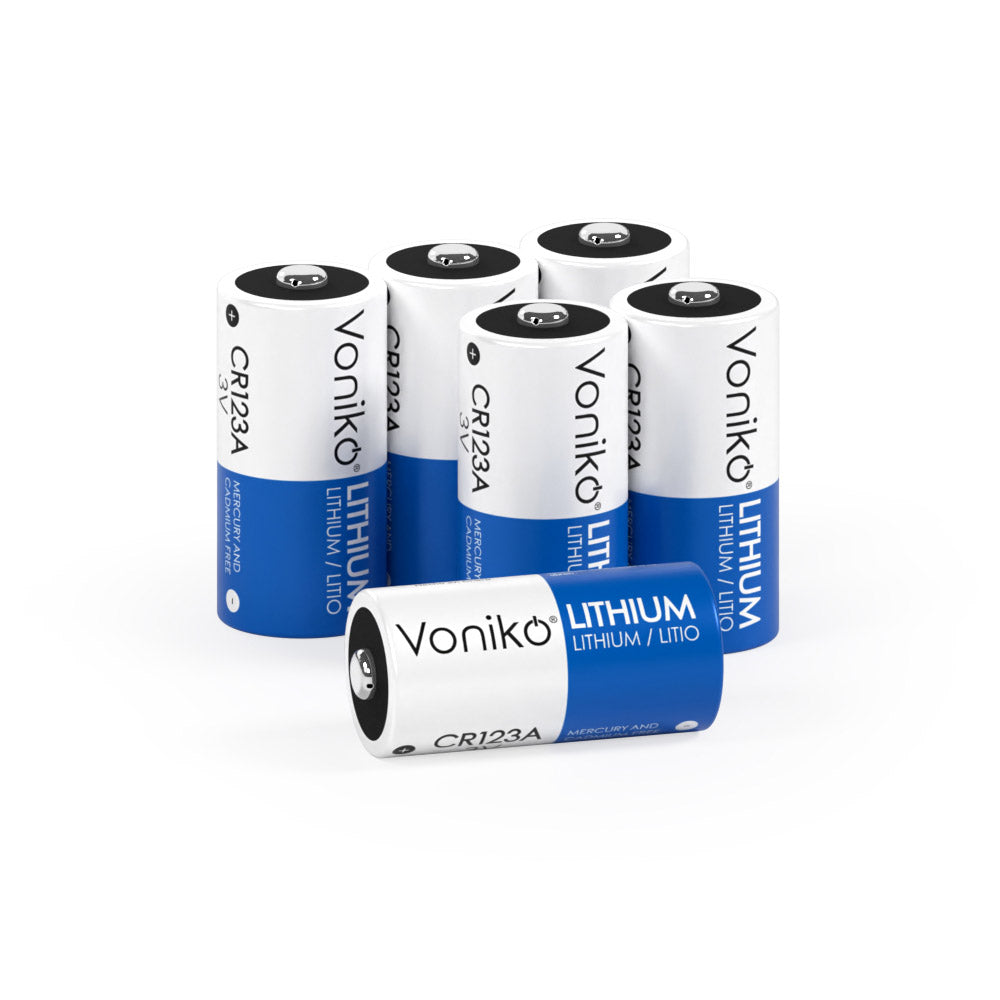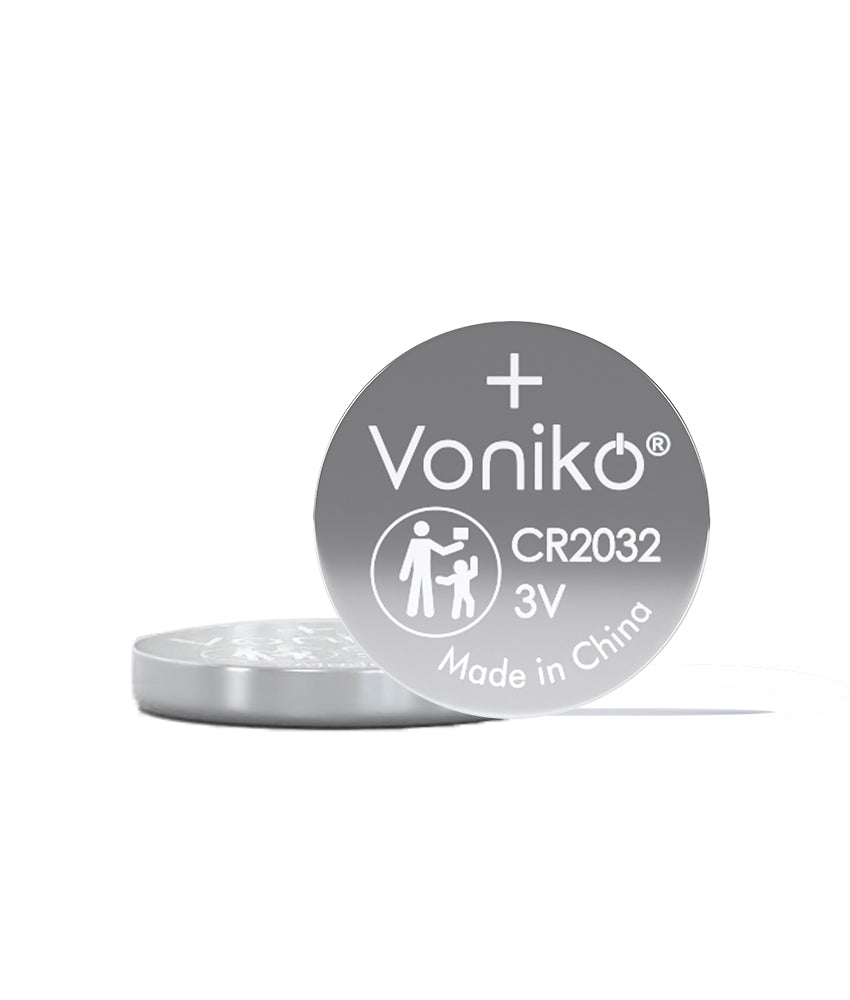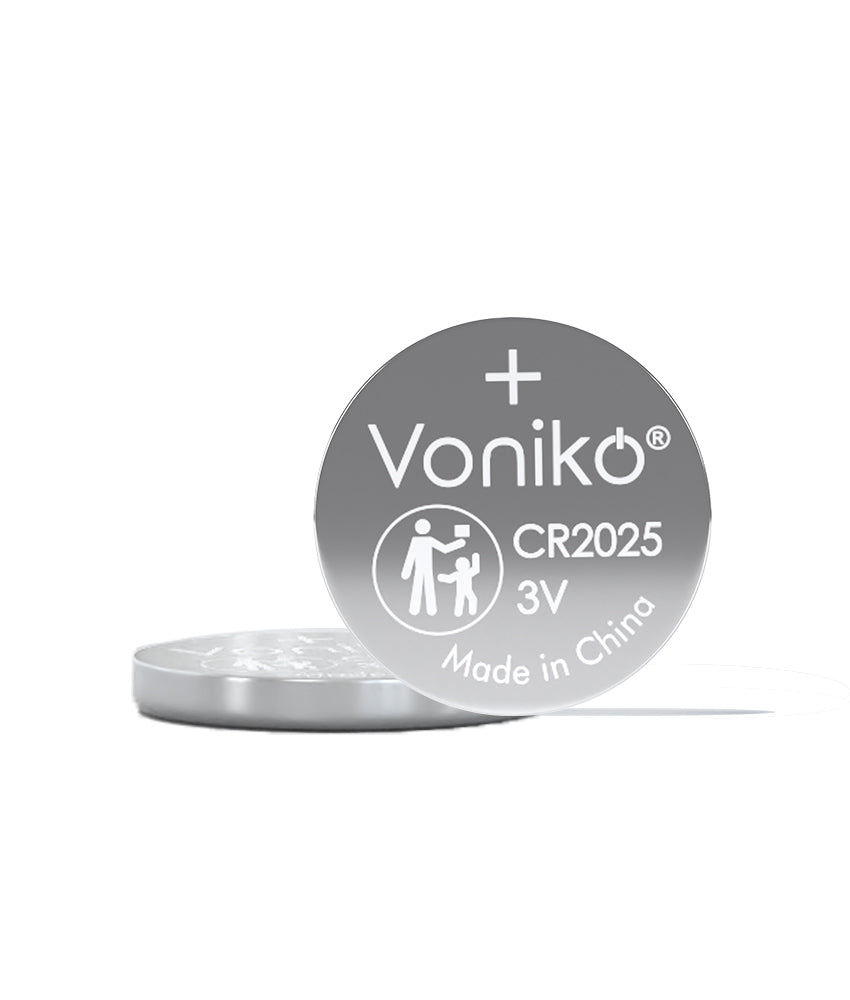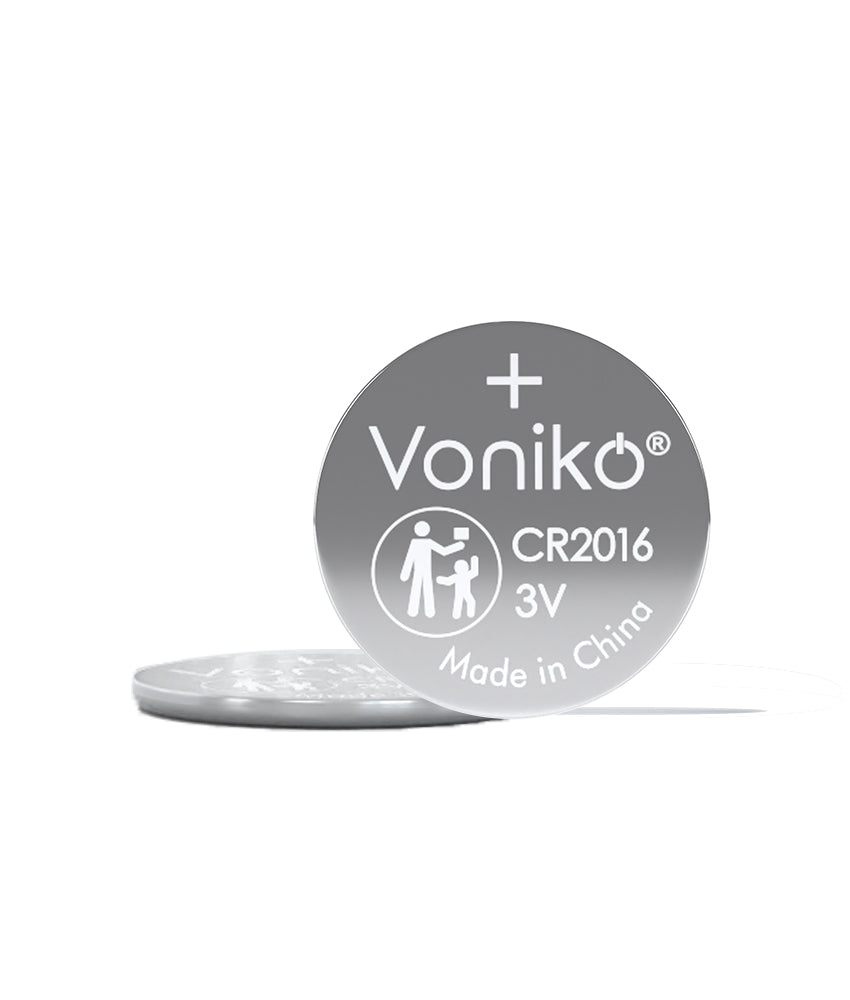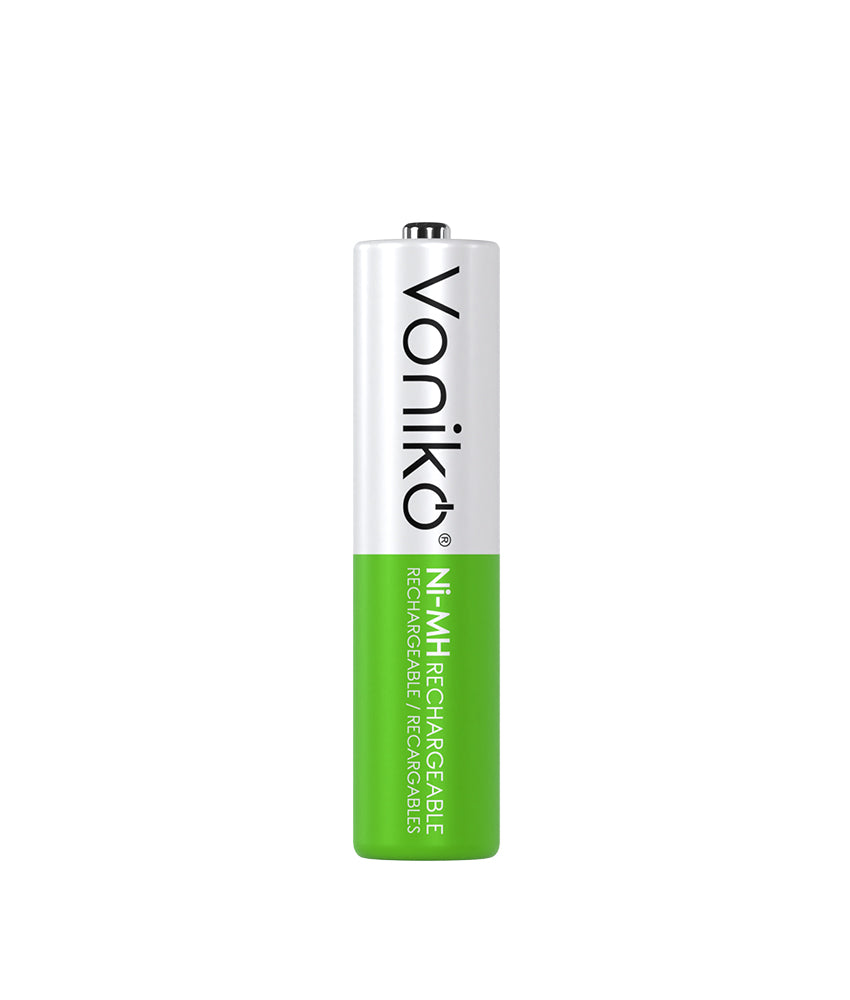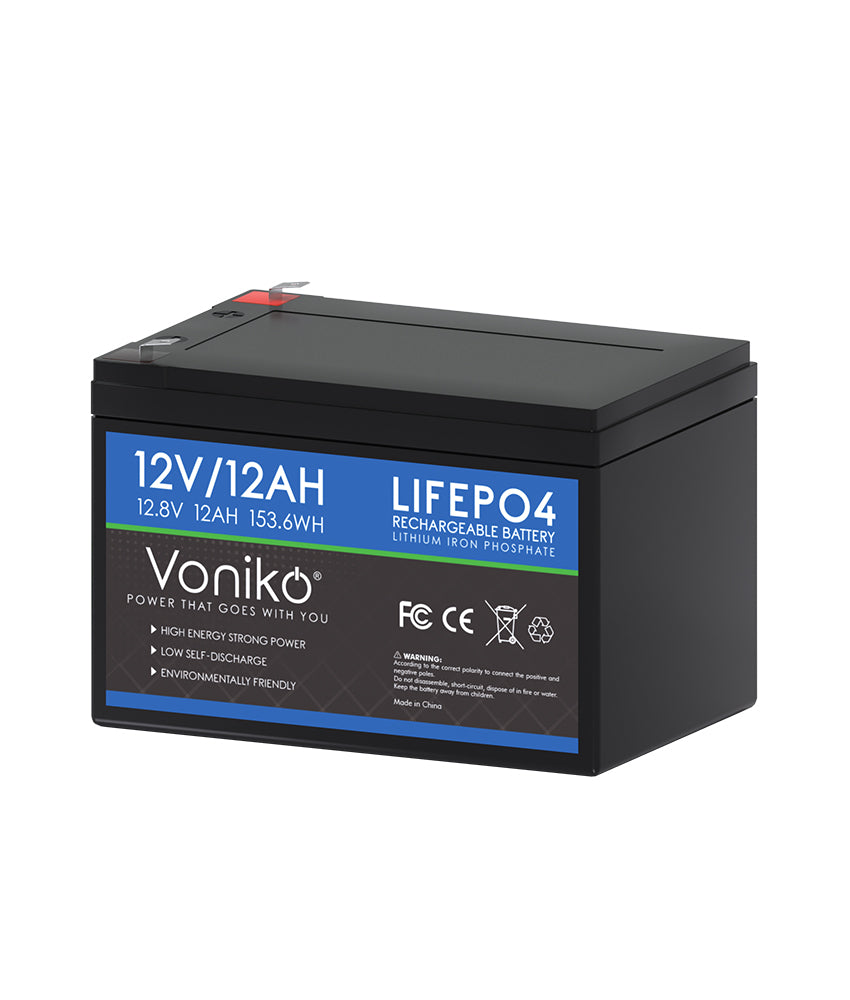We've all been there—your TV remote dies at the worst possible time, and you don't have a charger nearby. You might wonder if there's a way to recharge those alkaline AA batteries sitting in your drawer without any special equipment. While the internet is full of DIY hacks and workarounds, the reality is more complicated than you might think.
Alkaline batteries power countless devices in our homes, from cameras and clocks to toys and flashlights. Understanding whether you can safely recharge them without a charger isn't just about saving money—it's about safety and knowing what risks you're taking. At Voniko Batteries, we believe in helping you make informed decisions about your power needs.
Let's explore what science says about recharging alkaline batteries, the methods people try, and whether these techniques are worth the risk.
Can You Actually Recharge Alkaline Batteries?
The short answer is yes, but with major caveats. Alkaline batteries can be recharged to an extent, though they don't have very good recharge capacity or many recharge cycles. Unlike true rechargeable batteries like NiMH or lithium-ion, standard alkaline batteries weren't designed for recharging.

As an alkaline battery discharges, chemicals inside react to create electric current, and as these chemicals are used up, the battery depletes. By driving current through the battery in reverse direction, the equilibrium can shift back toward the original reactants. However, the reactions used in most alkaline batteries fall into the category of not being readily reversible, and the metallic zinc generated may form crystals that damage the separator layer.
Why manufacturers say "Do Not Recharge": Manufacturers do not support recharging of disposable alkaline batteries and warn that it may be dangerous, despite the fact that alkaline batteries have been recharged and chargers have been available. Never attempt to recharge alkaline batteries unless they were specifically designed for recharging, as recharging primary alkaline batteries may cause the batteries to leak or explode.
If you're looking for reliable, long-lasting power solutions, consider checking out our alkaline battery selection designed for optimal performance.
The Risks of Recharging Alkaline Batteries Without a Charger
Before we dive into the methods, you need to understand the serious safety concerns. Attempting to recharge alkaline batteries carries multiple risks that could damage your devices or even cause injury.
Leakage hazards: The biggest risk with recharging alkaline batteries is leakage. Alkaline batteries leak even under normal circumstances, and internal off gassing made worse by heat creates pressure that can breach battery seals, making the risk of leakage even bigger when recharging. Given enough time, all dead alkaline batteries will eventually leak potassium hydroxide, a strong base which causes irritation of skin, eyes, and lungs, and when it mixes with air, it crystallizes into potassium carbonate.
Explosion and fire risks: Recharging alkaline batteries is unsafe because too much heat can build up if cycling isn't maintained, which could lead to an alkaline battery exploding. The charging current must be low to prevent rapid production of gases that can rupture the cell.
Overheating dangers: The problem with recharging alkaline batteries is heat. When batteries overheat they tend to swell, splitting the cases and leaking their electrolytes. Once that happens, they are worthless, and if it happens when they are installed it can even damage your equipment.
Limited effectiveness: The capacity of a recharged alkaline battery declines with number of recharges, until it becomes unusable after typically about ten cycles. A disposable alkaline battery can only be recharged 7 to 10 times, if that much, and the amount of time and expense that goes into recharging alkalines just isn't justified by so few charge cycles.
5 Simple Ways to Recharge AA Batteries Without a Charger
While we don't recommend these methods for regular use, here are the techniques people have tried. Use these only in emergencies and at your own risk.
Method 1: Using an Old Cell Phone Charger
Many people have developed fancy charging circuits, but some have gotten charge into alkaline batteries with just an old cellphone plug rated at 3.7V, 300mA. This method requires careful attention and constant monitoring.
How it works: When charging, always go positive to positive and negative to negative—since charging is the opposite of draining a battery, you hook it up backwards from a series circuit. You shouldn't leave the batteries connected very long at a time because the voltage on the batteries will go up quickly but the actual amount of charge will not, so you have to disconnect the batteries frequently to let them cool down.

Step-by-step process:
- Find a low-amperage adapter (300mA or less)
- Connect positive to positive, negative to negative
- Charge for 1-2 minutes only
- Disconnect and let the battery rest for several minutes
- Repeat the cycle multiple times
- Monitor temperature constantly
Method 2: Warming the Battery
AA batteries spring back to life when you warm them—you can do this by placing them between your palms and rubbing them, or put them in a warm pocket or beneath your garments as long as they're in touch with your skin. This doesn't actually recharge the battery but can temporarily restore some function.
This method works by reducing internal resistance and allowing remaining chemical energy to flow more easily. It's best for getting one last use out of a nearly dead battery rather than true recharging.
Method 3: Using a Benchtop Power Supply
You can create a DIY charger if you have a benchtop power supply by setting the maximum current and voltage to what your battery can withstand, then hooking up your battery for about 30 minutes and disconnecting to check if they work.
Safety considerations: This method requires technical knowledge and equipment. You must:
- Set voltage to no more than 1.65V per AA battery
- Limit current to very low levels (20-65mA recommended)
- Monitor voltage and temperature constantly
- Never leave unattended
Method 4: Using Another Battery as Power Source
If you have several AA batteries, connect them in series and attach them to a cell phone battery, connecting the batteries' negative side to the cellphone battery's negative connector and the same for positive sides, holding the wires in place using tape—the batteries should be charged in a couple of hours.
This method is unreliable and potentially dangerous because you have little control over current flow and voltage matching.
Method 5: Pulse Charging Method
The technique of discontinuous contact allows the battery to suffer much less stress when recharging on condition of leaving the battery two times longer to rest than to recharge (2 seconds charging, 4 seconds resting), and it works without leaking. A current pulsed at a rate of 40 to 200 pulses per second with an 80% duty cycle is more suitable than low-ripple direct current, as pulsed charging appears to reduce the risk of electrolyte leakage.
This is the most technical method and requires specialized equipment to implement properly.
Why You Should NOT Recharge Non-Rechargeable Batteries
Despite the methods above, there are compelling reasons to avoid recharging standard alkaline batteries altogether.
Chemistry isn't designed for it: Alkaline batteries are marketed as single-use or disposable batteries, while lithium-ion cells are designed to be and marketed as rechargeable batteries—the primary differences are chemistry and design, making it just not smart to recharge alkalines.
Severe capacity degradation: Rechargeable alkaline batteries can only provide a dozen or so charge cycles, sometimes less, and alkaline batteries lose capacity with each charge cycle, which means they also run for less time.
Better alternatives exist: If you're into battery recharging, you're far better off with lithium-ion batteries which are designed to be recharged, safer to recharge, easier to recharge, and less likely to leak or explode. USB rechargeable batteries based on lithium-ion technology can be fully recharged within one to three hours.
Environmental and cost concerns: While you might think recharging saves money and helps the environment, the fact that a disposable alkaline battery can only be recharged 7 to 10 times means the time and expense isn't justified, and you're better off buying smart lithium batteries that can be charged a thousand times or more.
For eco-friendly battery disposal options, check out our guide on how to recycle alkaline batteries to learn proper recycling practices.
What Conditions Allow Alkaline Battery Recharging?
If you absolutely must try recharging alkaline batteries, certain conditions give you the best chance of success while minimizing risks.
Battery state matters: Fully discharged cells recharge less successfully than only partly depleted cells, particularly if they've been stored in a discharged state—battery charger manufacturers do not claim to recharge dead cells. If they're discharged by less than 25%, they can be recharged for hundreds of cycles to about 1.42V; if discharged by less than 50%, they can be almost fully recharged for a few dozen cycles to about 1.32V.

Low current is essential: You can trickle charge alkaline batteries if done really slow, like under 20mA. Higher currents dramatically increase the risk of leakage and explosion.
Temperature monitoring: If you ever charge them, check every 30 minutes or so, and if they get really warm, toss them in your used battery pile. Seriously, they could explode if you charge them too fast—it's a dangerous thing to do.
Voltage limits: To make sure that your batteries are fully charged and not damaging them, monitor their voltage—it should not exceed 110%, for example: a battery of 1.5V has a maximum charge voltage of 1.65V.
Better Alternatives to Recharging Alkaline Batteries
Instead of risking the dangers of recharging alkaline batteries without a charger, consider these safer and more effective alternatives.
Invest in true rechargeable batteries: NiMH (Nickel-Metal Hydride) batteries are designed for hundreds of charge cycles and cost less over time. They're available in standard AA, AAA, C, and D sizes and work in most devices that use alkaline batteries.
Use lithium-ion USB rechargeable batteries: These modern solutions offer the convenience of USB charging without the need for separate chargers. They provide consistent voltage throughout their discharge cycle and can be recharged over 1,000 times.
Keep spare alkaline batteries on hand: Rather than trying to revive dead batteries, simply keep a supply of fresh ones. Store them properly in a cool, dry place for maximum shelf life.
Battery management practices:
- Remove batteries from devices not used regularly
- Don't mix old and new batteries
- Replace all batteries in a device at the same time
- Check expiration dates before use
Use the right battery for the job: High-drain devices like digital cameras work better with rechargeable NiMH batteries, while low-drain devices like remote controls can use standard alkaline batteries efficiently.
Safety Precautions If You Attempt DIY Battery Recharging
If you decide to proceed despite the warnings, follow these safety measures to reduce (but not eliminate) the risks.
Essential safety equipment:
- Safety goggles to protect eyes from potential leaks
- Chemical-resistant gloves
- Non-flammable surface for charging
- Fire extinguisher nearby
- Well-ventilated area
Monitoring requirements: Attach a multimeter to the batteries and monitor them so they never reach more than 110% of their rated voltage. Never leave charging batteries unattended.
Battery selection: Never take batteries that are not alkaline, already leaking, rusty, of a cheap brand, give 0.00 volts, or are supposed to be outdated for too long. No saline lithium or any non-alkaline battery—it won't work and it's dangerous.
Disposal of failures: Cells that have leaked electrolyte are unsafe and unsuitable for reuse. Any battery showing signs of swelling, excessive heat, leakage, or damage should be immediately removed and properly disposed of.
Emergency response: Know how to respond if a battery begins to leak or overheat. In the event that battery leakage comes in contact with your skin, flush the area for 15 minutes with copious amounts of water and seek medical attention.
Frequently Asked Questions
Q: Can I really recharge alkaline AA batteries without any charger at all?
Technically yes, but it's dangerous and not recommended. While methods like using old phone chargers or power supplies exist, they carry serious risks of leakage, explosion, and fire. The minimal benefit (7-10 recharge cycles at best) doesn't justify the safety hazards.
Q: Will warming up dead batteries actually bring them back to life?
Warming batteries can temporarily improve performance by reducing internal resistance, but it doesn't truly recharge them. This trick might give you a few more minutes of use from a nearly-dead battery, but it's not a long-term solution and doesn't restore chemical capacity.
Q: What happens if I put alkaline batteries in a regular NiMH charger?
Chargers for NiMH and NiCD charge at 163-180mA, which will make an alkaline battery leak. Regular rechargeable battery chargers aren't designed for alkaline batteries and can cause dangerous overheating, leakage, or explosion. Never use standard chargers on non-rechargeable batteries.
Q: How many times can you safely recharge an alkaline battery?
The capacity of a recharged alkaline battery declines with number of recharges until it becomes unusable after typically about ten cycles. Even specialty alkaline battery chargers can only safely recharge alkaline batteries 7-10 times maximum before they become unreliable or dangerous.
Q: Are rechargeable alkaline batteries different from regular alkaline batteries?
Yes. Rechargeable alkaline batteries (RAM batteries) are a specific type capable of recharging for repeated use in AAA, AA, C, D, and 9-volt formats. They're manufactured fully charged and can hold their charge for years longer than nickel-cadmium and nickel-metal hydride batteries. However, even these specially-designed batteries have limited recharge cycles compared to NiMH or lithium-ion options.

